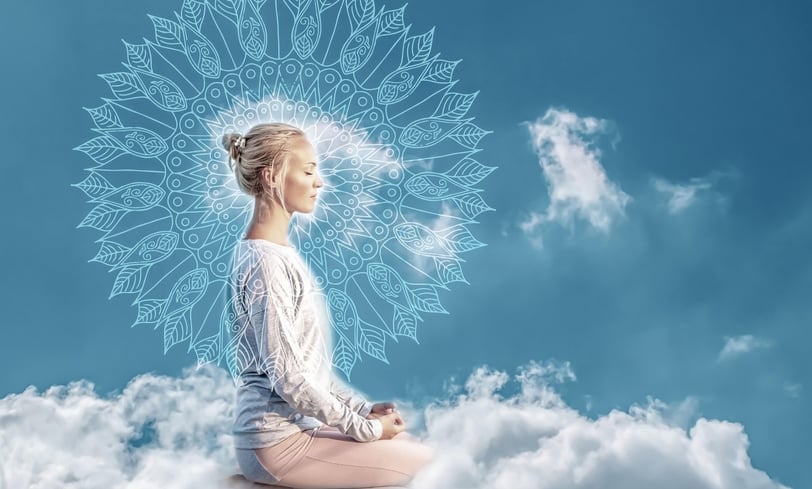Activating Sahastra or Crown Chakra
The five lower chakras correspond to five fundamental elements, each linked to a specific sound known as bijam. Bijam refers to a single letter adorned with a bindu, which is a dot placed above a Sanskrit character. For instance, adding a dot above the letter A changes its pronunciation to AM. When the bija mantras associated with these five elements are chanted similarly to OM, as we explored in our previous discussion, the corresponding chakra becomes energized. These bijaksharas are indeed effective in stimulating the chakras.


The five lower chakras are linked to five fundamental elements, each represented by a specific sound known as bijam. Bijam refers to a single letter adorned with a bindu, which is a dot placed above a Sanskrit character. For instance, placing a dot over the letter A transforms its pronunciation to AM. When the bija mantras corresponding to the five elements are chanted similarly to OM, as discussed previously, the respective chakra becomes activated. These bija sounds are effective in energizing the chakras. For the muladhara chakra, the bija sound is LUM (earth), for swadishtan it is VUM (water), for manipuraka it is RUM (fire), for anahat it is YaUM, and for vishudi it is HUM (akash). Chanting these bijas with focus, alongside your concentration, bhandhas, and exercises, significantly enhances chakra activation. It is essential to fully develop the lower chakras before progressing from the ajna chakra to the sahasrara, or crown chakra. Technically, sahasrara is not classified as a chakra, but for simplicity, we refer to it as the top head or crown chakra. Similarly, when the ajna or third eye chakra is fully developed, the back head chakra activates automatically, although some effort is required. As the kundalini energy rises through the ajna chakra, it splits into three streams: the majority ascends to the crown, another portion flows to the back head chakra, and the remaining energy moves to the area between the eyebrows, all merging with the surrounding energy. This explains the sensations experienced in the presence of spiritually advanced individuals.
When kundalini energy penetrates the Rudra granthi, it ascends to the sahasrara, the realm where Shiva is believed to dwell. Shiva and Shakti represent the duality of masculine and feminine energies, or the interplay of static and dynamic forces. Between the ajna and sahasrara, there are several small yet potent chakras. As kundalini moves past the ajna, it governs all your actions until it unites with Shiva. This union grants you the ability to master your mind, as she is intimately connected to her beloved Shiva. Furthermore, she elevates you into a remarkable individual, empowering you to bestow blessings upon others. However, it is crucial to understand that you cannot act against the divine laws of karma established by God, who himself adheres to these principles. In this context, blessing means that your prayers gain greater potency due to your proximity to the divine. Upon reaching the sahasrara, you transcend your physical form, guided by elevated energy frequencies, and attain a heightened awareness of the divine. Beyond this point, it becomes challenging to articulate the experience. Over time, an invisible connection to the cosmos forms, ensuring you remain in tune. At this stage, you require no bhandha, exercises, or breathing techniques; your kundalini's passage beyond ajna renders you self-sufficient. Initially, you may perceive an indigo hue, but with consistent practice, you will witness a spectrum of colors, eventually culminating in the radiant white of the sun. When you begin to see multicolored stars during meditation, it indicates that your sahasrara is awakening. These stars will manifest as dots, distinctly different from the color visualizations associated with the lower chakras. The energy you receive from the cosmos through the sahasrara is influenced by your karmas. A fully developed sahasrara radiates light throughout your skull. The heat and pressure generated by kundalini upon reaching your skull can cause a nectar-like fluid to flow from the soft palate of your mouth.
